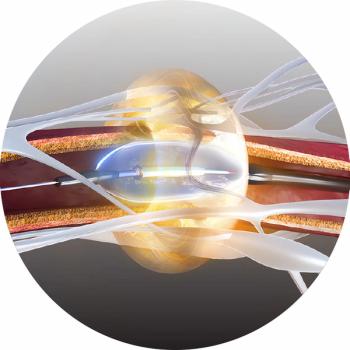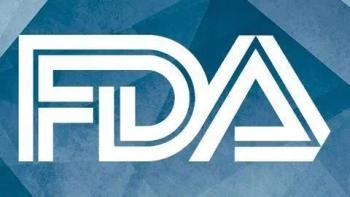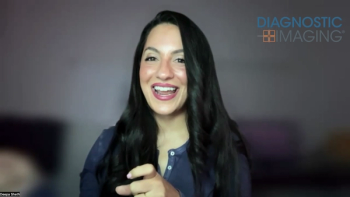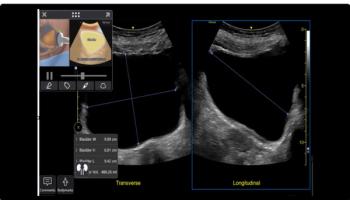
Contrast ultrasound predicts response to angiogenesis therapy
A new contrast-based Doppler ultrasound technique can predict within the first two weeks of treatment which patients with gastrointestinal stromal tumors (GIST) will respond to Gleevec (imatinib) therapy, according to a study presented at the 2005 American Society of Clinical Oncology meeting in Orlando.
A new contrast-based Doppler ultrasound technique can predict within the first two weeks of treatment which patients with gastrointestinal stromal tumors (GIST) will respond to Gleevec (imatinib) therapy, according to a study presented at the 2005 American Society of Clinical Oncology meeting in Orlando.
Contrast uptake rates calculated with perfusion software were found to correlate to therapy success.
"This technique allows detection of active residual GIST cells in selected necrotic masses," said lead investigator Dr. Nathalie Lassau, of the Department of Medical Imaging at the Institut Gustave Roussy in Villejuif, France. "Biopsies of tissue exhibiting neovascularization could be performed to characterize secondary resistance to Gleevec in order to propose other treatment options for refractory patients."
Lassau and colleagues reported data on 30 patients with advanced GIST who underwent full imatinib therapy. The investigators scanned lesions before and at several points after treatment using contrast-enhanced Doppler and compared results against CT.
They found a strong correlation between treatment response and the decrease in tumor contrast uptake the first day, after one and two weeks, and two months after the beginning of treatment (p<.001).
Scans were done before and immediately after imatinib administration, on days seven, 14, and 60, and then subsequently every three months for two years. Researchers calculated contrast agent uptake differences at each tumor site and then gauged ultrasound scan results to CT assessment of tumor volume and necrosis.
Researchers divided patients in two groups according to treatment response. Good and bad responders showed a mean contrast uptake of 77% and 61%, respectively. The investigators concluded that a decrease of more than 20% in contrast uptake at day seven was predictive of a good response.
"At day 14, the mean percentage of tumor contrast uptake decreased from 77% to 39% in tumors with a good response. This mean percentage remained at 59% in tumors exhibiting a poor response at two months," Dr. Lassau said.
Areas with initial reduced uptake followed by uptake increase suggested tumor neovascularization and apparent treatment failure. Three patients who had tumor recurrence showed increased contrast uptake in ultrasound before any tumor volume increase were apparent on CT.
For more information from the Diagnostic Imaging archives:
Newsletter
Stay at the forefront of radiology with the Diagnostic Imaging newsletter, delivering the latest news, clinical insights, and imaging advancements for today’s radiologists.































